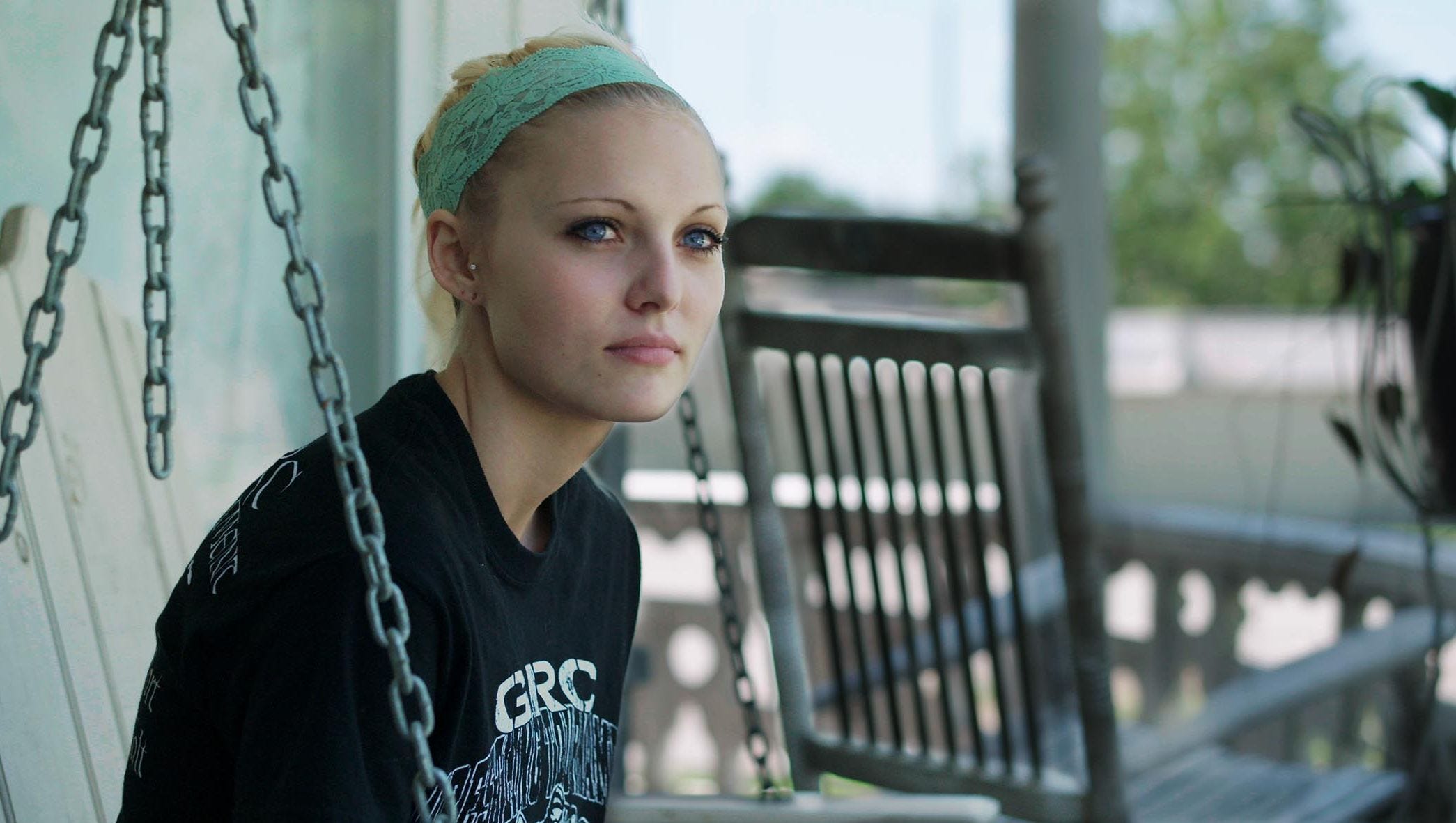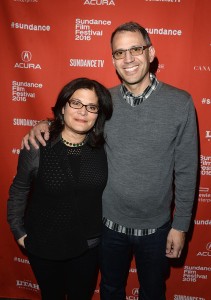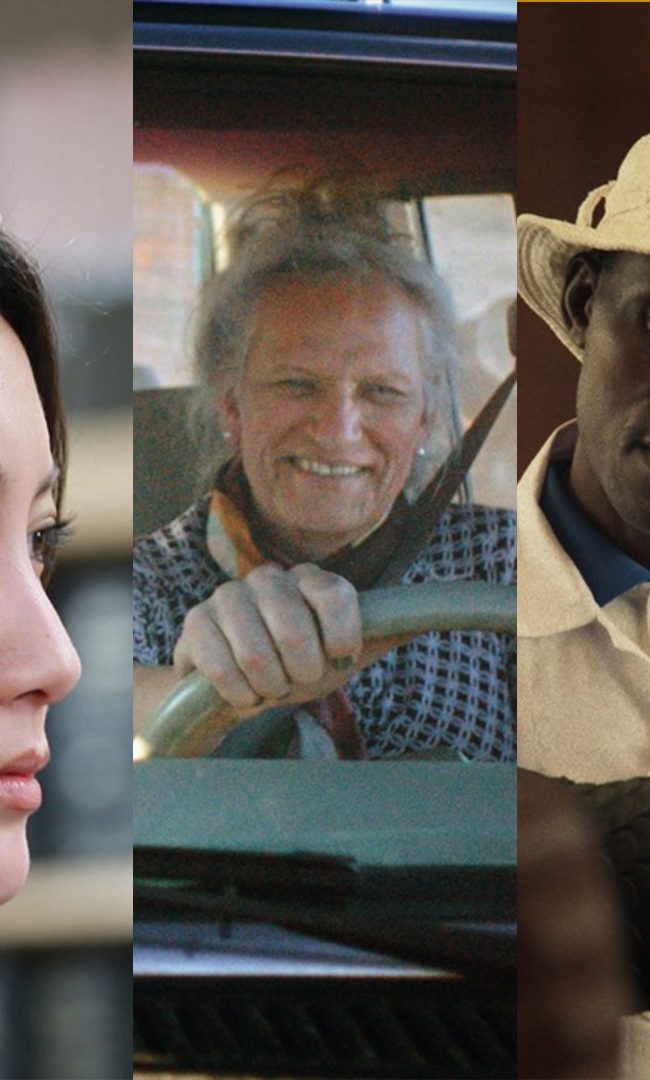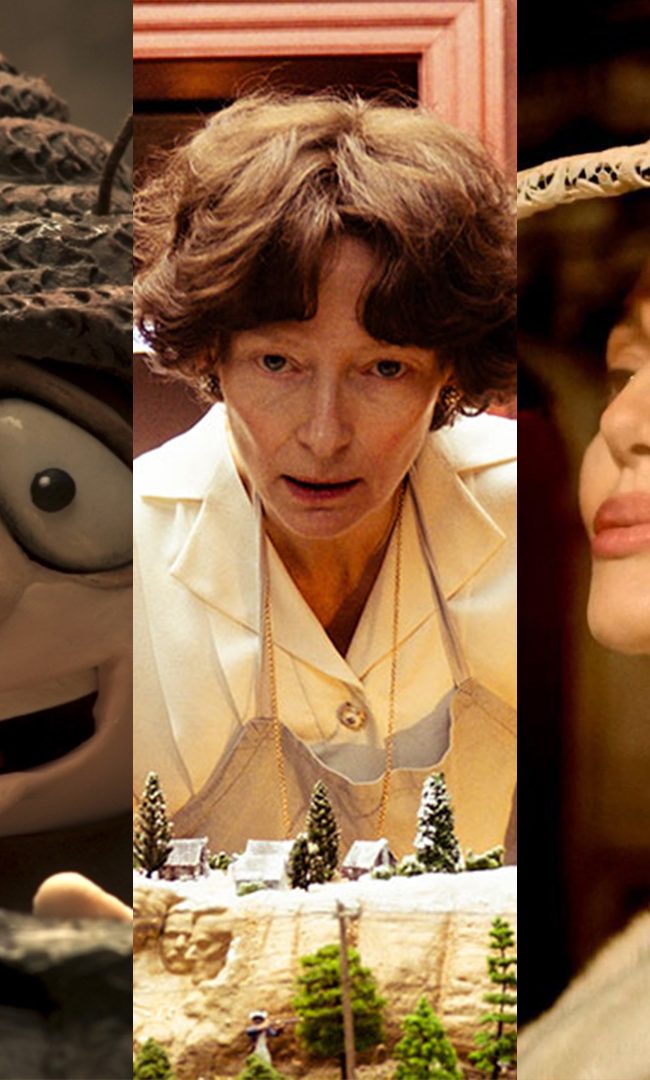A Conversation With Bonni Cohen (AUDRIE AND DAISY)

I recently spoke by phone with filmmaker Bonni Cohen, who co-directed the documentary Audrie & Daisy (which I previously reviewed during AFI DOCS) with her husband and longtime creative partner Jon Shenk. Their harrowing, and deeply moving, film, which chronicles the horrors that befell two young high-school women – Audrie Pott and Daisy Coleman – after their communities turn against them following sexual assaults, has just been released on Netflix, and should immediately be seen by as wide an audience as possible, especially (but not exclusively) teenagers and parents of teenagers. Here is a condensed digest of our conversation, edited for clarity.
Hammer to Nail: So you and Jon Shenk met in the Stanford documentary program. What made you decide to work together?
Bonni Cohen: (laughs) Well, we fell in love. That was the first thing. We were not filmmaking partners then. We got married and we started our business together; that was a couple of years after we graduated. And now, we have our own teenagers. A lot of the impetus, for us, behind making the film, was this crazy world we were seeing – not necessarily through our own kids, but what they were being sent off into – this kind of Wild West of social media and just bizarro land compared to how we grew up.
HtN: I bet! Do you have teenage boys or girls?
BC: We have a teenage boy, who’s 17, and a teenage girl, who’s almost 14.
HtN: Got it! According to your press notes, Audrie & Daisy grew out of discussions you had with the staff of Futures Without Violence, which is an organization that was a driving force behind passage of the Violence Against Women Act of 1994. You write that you originally thought of making a film that would depict how teenage boys grapple with the challenges of developing into mature men. How did you get from that initial concept to focusing on these two victims of assault?
BC: Well, I don’t think we feel that we moved away from it, entirely. We did want to focus the film on a couple of cases where communities had gone through this kind of tragedy and trauma, and we wanted to see how communities responded to them. That was number one. But we very careful to make sure that there were a number of different male archetypes in the film, ranging from the very dark to the very light, in terms of experience.
Charlie Coleman, whom we consider to be kind of the hero of the film – he’s Daisy’s older brother – is someone who went through his own trauma, because these were his friends, obviously, who assaulted Daisy. He was so incredibly traumatized by the fact that not one of them thought to text him that night to say, “What the hell is your sister doing in Matt Barnett’s basement?” And out of that experience, he also comes back, and rises out of the ashes.
He’s an athlete – a very accomplished athlete, actually – and you see him in the film coaching his own Little-League players to speak respectfully to girls, and he kind of organically infuses this message of respect into the conversations he has with his players. So for us that felt like a very organic way to get the hopeful message of what boys can do when they want to be a positive influence, because most boys are. Most boys are really good, and you sort of have the opportunity to see that come through in Charlie.
HtN: You’re right. He is a very important character. I do think that the world could use more films that teach proper behavior, offering examples of how men can grow up learning not to assault. After making this film, do you have a sense of what factors lead to healthy sexual behavior vs. what leads to this kind of predatory behavior?
BC: Well, through our research, which was extensive – it went on for a couple of years, before the film and then during the making of the film – we attribute a lot of the violence and sexual tendencies to the amount of online pornography that’s consumed these days by boys. It used to be, when we were growing up, that if a boy saw a Playboy magazine, he might have taken it from under his father’s mattress, where it resided. That was like a huge deal. Now, you can spend an hour on some bevy of online porn sites before you even go to school in the morning, and the images are violent. It seems as if boys are getting the the impression, from these images and videos online, that that’s somehow what women and girls want in sexual relationships. So there’s a disconnect between the reality of how to develop a relationship with another person and this kind of violent fantasy that is on tap, basically, online.
HtN: So it is a difficult subject matter. Did you face any challenges with your on-camera subjects feeling sensitive about how they or their families were portrayed?
BC: Definitely. We spent a lot of time talking to experts. And actually, Futures Without Violence came in very handy and supported us a lot around issues of re-traumatization and how to step very carefully into these families that we were going to film, to make sure to take care of them, and support them and to look out for warning signs of re-trauma, which happens very frequently. We went in very slowly. In fact, we developed relationships with both the Potts and the Colemans over a period of months, where we didn’t even turn the camera on. We just had conversations, we sat with them, we visited, and it actually took Daisy a very long time to come out and feel comfortable; partially, we think, because of the previous experience she had had with the media, during the time when her case was open, and also just trusting anyone, period, after what had happened to her, was very hard.
We handled it carefully. We still worry about it every time one of them watches the movie. What kind of effect will have it on them? Every time they go through that, it re-opens the wound. But they made a collective decision, as individual families, to go forward with the film. They thought it was important and they wanted their voices out there. So we went with it.
HtN: How about with the people in the film who are neither victims nor families of victims, such as the sheriff, who starts out seeming like a standup guy, but then, as the film goes on, that opinion of him changes. Did you encounter any resistance from him or others who might have worried about how they were going to be portrayed?
BC: Well, I don’t think we encountered resistance, since he did the interview. The ultimate form of resistance would have been refusing to be in the movie. He very much wanted to be in the movie. He wanted his time to tell his story. It was very difficult for the town of Maryville [in Missouri]. I think, from where all of us are sitting – and I’m putting us, you and me, in the same category – he starts off as an upstanding guy, with two daughters, and a fairly rational perspective on everything and then he kind of devolves into this blaming of girls and defending of boys.
This is sort of a pattern in these small towns, where there’s very little evidence to go on, even though he claims to have collected it, and there’s very little to stop them from having those opinions, which are kind of fear-based and part of a long and entrenched tradition of that kind of model, blaming girls and defending boys. He sort of can’t help himself. So no, he didn’t resist. He may have resisted the first time we asked him, but we went and met with him; I spent a couple of hours of with him before I put him on camera. I’ll tell you exactly what I told him, which is that we wanted to cast the town of Maryville with as wide a range of perspectives as we could, from among those willing to talk to us on camera. To give them an opportunity to tell their story outside of the mainstream news media.
HtN: And have the people of Maryville, beyond the families involved, seen the film?
BC: I don’t know. Probably, by now, they have. There have been public screenings at film festivals. We have not taken the film to Maryville yet. We will be taking it to St. Joe [St. Joseph, Missouri], which is the next town over [where Daisy’s family now lives]. We would love to bring it to Maryville and be there to have a conversation, if they would have us.
HtN: Sure. Now, I imagine, given the sensitive nature of the subject that you kept your film crew fairly small. Jon is the main cinematographer on the film. Is it just the two of you? Are there more?
BC: It was usually the two of us, a sound person and one of our two producers usually traveled with us. So there were four of us, total.
HtN: And what cameras did Jon mostly use?
BC: We shot on the Sony F5, except for the helicopter material, which is a Cineflex camera.
HtN: Thanks. Final question. You are, as we discussed, both parents of teenagers, one boy and one girl. In what ways has making this film had an impact on how you talk to your children about these issues?
BC: That’s a great question, and it’s come up a lot in our family, as you can well imagine. (laughs) Our kids had to suffer through the production of the film over the course of two years. But actually, it was very interesting for Jon and me, because while we consider ourselves really progressive, in terms of how much we speak to our kids or the kinds of subject matter we cover, I’m not sure we would have had these kinds of conversations had we not been making the film. What do you do if you see a friend of yours carrying an unconscious girl upstairs? How do you behave on social media? How do you become an upstander? And we found ourselves having those conversations, and are actually pretty grateful to the film and to the filmmaking process that we had that opportunity. And so that even emboldened us further to get the film out so that other parents would have that same opportunity.
HtN: Well, it’s definitely a powerful film and it sheds light on some very important issues, so I certainly am grateful that you made it. Thank you.
BC: Thanks so much for watching and being interested!
– Christopher Llewellyn Reed (@ChrisReedFilm)













Pingback: Audrie & DaisyOctober 12th, 2016 - Cultivate Cinema Circle